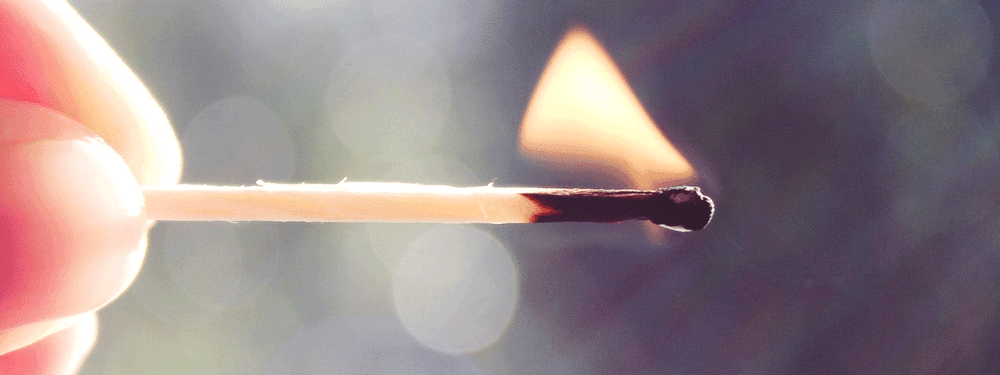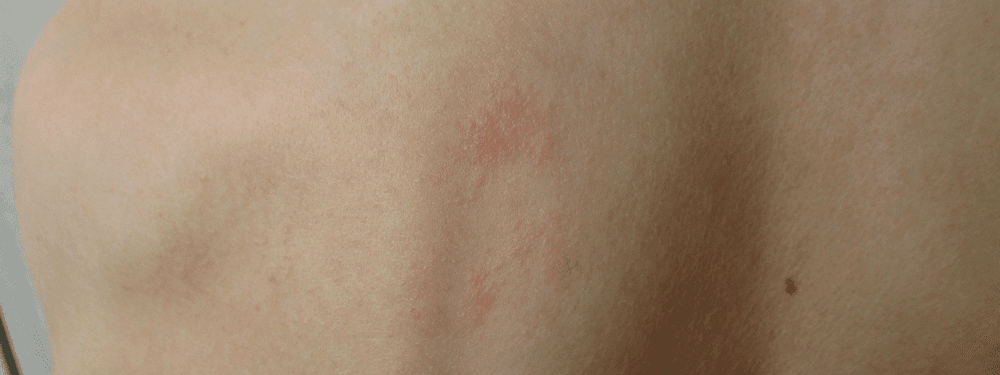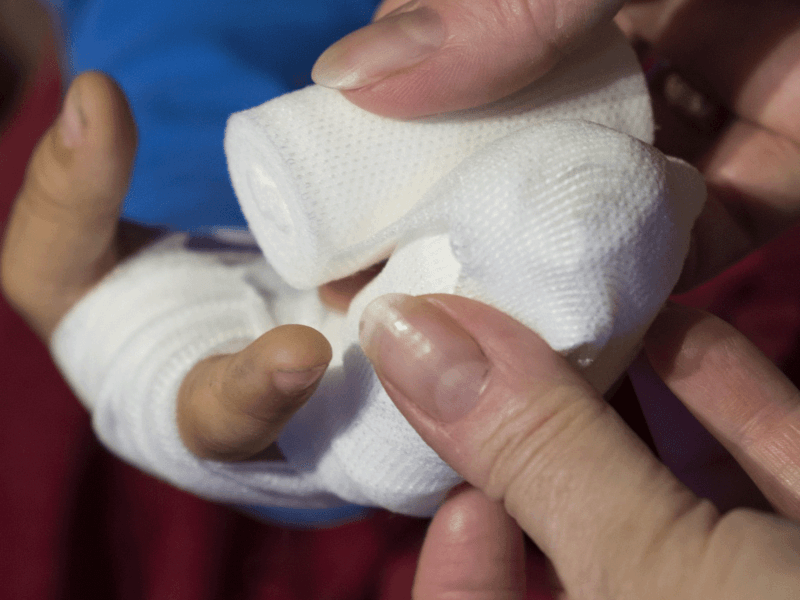Accidents happen. But not every injury is straightforward – what if a burn blisters? What follows is a brief guide to help you safely assess and handle a selection of common mishaps involving the skin – and to know when it’s time to seek medical help.

CUTS
Immediate treatment:
The first thing you need to do is apply pressure with a clean cloth to stop the bleeding. Depending on how deep the cut is, this can take a few minutes. It’s important to not sneak a peek because that will disrupt the clotting and make it take even longer. From there, rinse the cut under running water, make sure there’s nothing in the wound, and apply petroleum jelly or an antibiotic cream and a sterile bandage.
Ongoing treatment:
If the cut’s edges easily come together, you can use a liquid bandage to keep it closed and protected. Just make sure the glue is dry before you cover the cut with a bandage. This part goes for any cut: Once a scab has formed, remove the bandage and let it air out. Without the bandage trapping moisture, the cut will heal better. Keep an eye out for signs of infection, such as redness around the cut, swelling, the skin around the cut is warm, increased pain, or pus. (Itching means it’s healing.)
When to see a doctor:
There’s no golden rule to determine if a cut is serious enough to need stitches, but there are some rules of thumb: Cuts on the face (because they can scar more easily without stitches), over joints (because they don’t stay shut), or near tendons or arteries need urgent medical attention. So does a cut that goes through multiple layers of skin, gapes, or doesn’t stop bleeding in five minutes (especially if you’re on blood thinners). You should also see a doctor if there’s debris in the cut or if the cut appears to be infected. And you should have a doctor take a look at your cut if it was caused by a rusty or dirty implement, because bacteria can invade the wound.

BURNS
Immediate treatment:
Call 911 right away for burns that cover a large area of your body – for example, if you spill a pot of boiling water on yourself. Even if a burn is superficial, it needs immediate medical attention if it spans more than 20% of an adult’s body or 10% of a child’s. While you wait for help to arrive, get the burned area under room temperature running water (it may be easiest in the bath or shower). Avoid cold or icy water; the extreme temperature change can further damage the skin. For small burns, run the wound under room temperature water. Then apply aloe vera gel or topical lidocaine and cover it loosely with a large adhesive bandage or gauze.
Ongoing treatment:
Change the dressing a couple times a day, and keep an eye out for signs of infection as you would with a cut. When the initial stinging subsides, apply an antibiotic cream. Don’t pop the blister if one forms; it’s protective, and burns are more prone to infection than the typical cut.
When to see a doctor:
Seek immediate medical attention for any wound on the face, genitals, hands, or feet, ideally at a hospital with a burn unit. Rather than second- or third-degree, doctors now use the terms “partial thickness” and “full thickness” when discussing burns. No matter how small, a partial or full-thickness burn should be seen. These are the telltale signs: extreme redness and immediate blistering, the wound appears wet, or the burn looks pale, mottled, or deep within the skin.’
What about sunburns?
Rarely does a sunburn warrant a visit to urgent care or the ER. First, get out of the sun. Then, apply a gentle moisturizer, aloe vera, or a cooling gel. Ibuprofen can reduce pain and inflammation. If blisters form, don’t pop them. If they look infected, see a doctor.

RASHES, INSECT BITES, AND STINGS
Immediate treatment:
The treatment is pretty similar for most kinds of itches: Take an oral antihistamine, such as Claritin or Zyrtec. Benadryl works too, but remember, it’s a sedative. Wash the area with soap and water, especially if you’ve been in contact with poison ivy or oak, since their oils can spread on hands and clothing. Apply a topical itch relief cream. Ice can help calm any stinging.
Ongoing treatment:
Continue taking antihistamines and apply creams to help with the itching. A red welt and some pain at the site of a sting or bite is normal. However, insect stingers can introduce bacteria, so watch for signs of infection (same as above). If you’ve been in contact with poison ivy or oak, wash any clothes that touched your skin.
When to see a doctor:
Stings are an emergency when they cause anaphylaxis, which is defined as affecting two or more of the following systems: skin (a rash like hives appears in an area besides the spot you were stung), respiratory (you feel like your throat is closing, or you’re wheezing), gastrointestinal (vomiting or diarrhea), or cardiovascular (you feel lightheaded or experience a fast heart rate).
Dangerous bites, like those from certain spiders, come with other symptoms, such as abdominal cramps, headache, or a bite with a blood blister or crater in it. If you’re bitten and experience any of those, go to urgent care. And check for ticks. If you find a bite with a bull’s-eye rash around it, that’s a sign of Lyme, and you should see a doctor.



 Inside the Beef Tallow-Based Skincare Craze
Inside the Beef Tallow-Based Skincare Craze